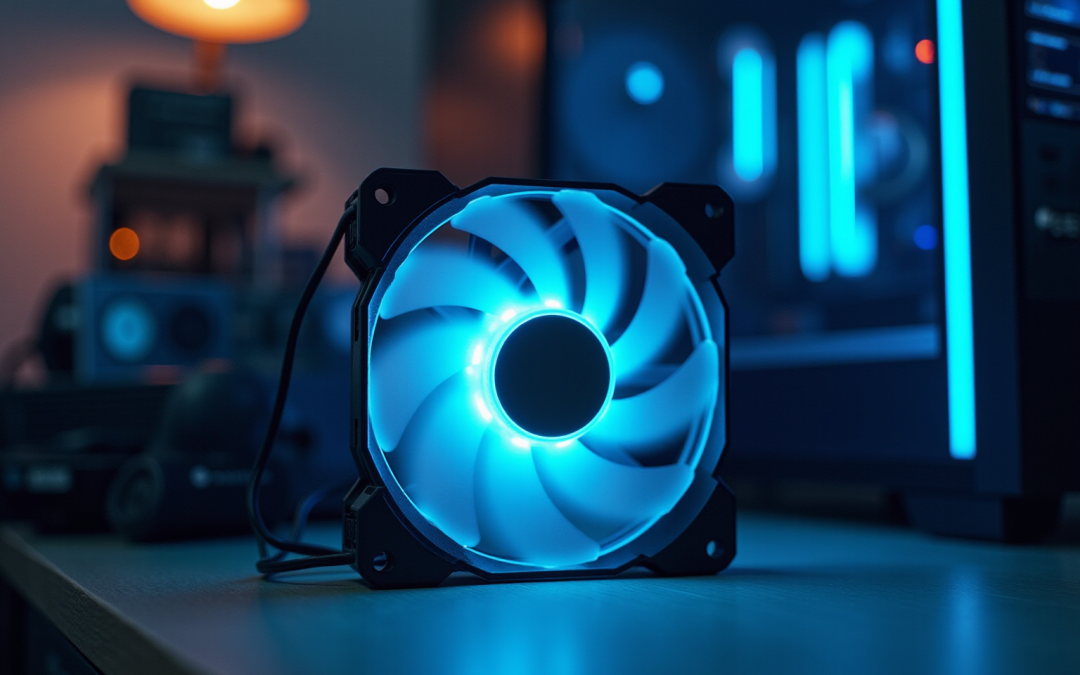Overview
This article examines the critical aspects of cooling fans for electronics, comparing their features and assessing their suitability for diverse applications. It underscores essential characteristics such as:
- Airflow
- Noise levels
- Energy efficiency
- Durability
Furthermore, it delves into specific brands and innovations tailored to meet various needs, ultimately guiding users in selecting the most suitable cooling solutions for their electronic systems.
Introduction
Selecting the right cooling fan for electronics transcends mere airflow considerations; it involves a nuanced understanding of the intricate balance of features that can profoundly affect both performance and longevity.
With a vast array of options at your disposal, ranging from whisper-quiet models ideal for home environments to high-performance units engineered for gaming rigs and industrial applications, the stakes are considerable.
What criteria should one prioritize to guarantee optimal cooling efficiency and reliability? This article explores the essential features of cooling fans, compares leading brands, and provides a comprehensive guide tailored to help readers navigate the selection process based on their specific needs.
Understanding Cooling Fans: Essential Features and Functions
A cooling fan for electronics serves as an integral component within electronic systems, essential for dissipating heat and maintaining optimal operating temperatures. Understanding their key features is crucial for selecting the right fan for specific applications.
- Airflow (CFM): Measured in cubic feet per minute (CFM), this metric indicates the volume of air a fan can move. Higher CFM ratings are vital for cooling high-performance components, ensuring efficient thermal management.
- Noise Levels (dBA): The decibel level of a fan is a critical consideration, particularly in environments prioritizing noise reduction. Fans with lower dBA ratings are preferable for quiet operations, contributing to a more pleasant user experience.
- Energy Efficiency: Modern devices often incorporate energy-saving designs, such as brushless motors, which reduce power consumption while maintaining performance. This efficiency is increasingly important in today’s energy-conscious environment.
- Static Pressure: This factor is especially crucial for blowers used in restrictive settings, such as those with heatsinks or radiators, where the movement of air must overcome resistance to ensure effective cooling.
- Durability and Lifespan: Elements such as bearing type—whether ball or sleeve—can significantly influence a fan’s longevity and reliability in demanding applications. Choosing the right bearing type can enhance performance and extend operational life.
In summary, selecting the appropriate cooling fan for electronics involves understanding these key features, which collectively ensure optimal performance and reliability in electronic systems.
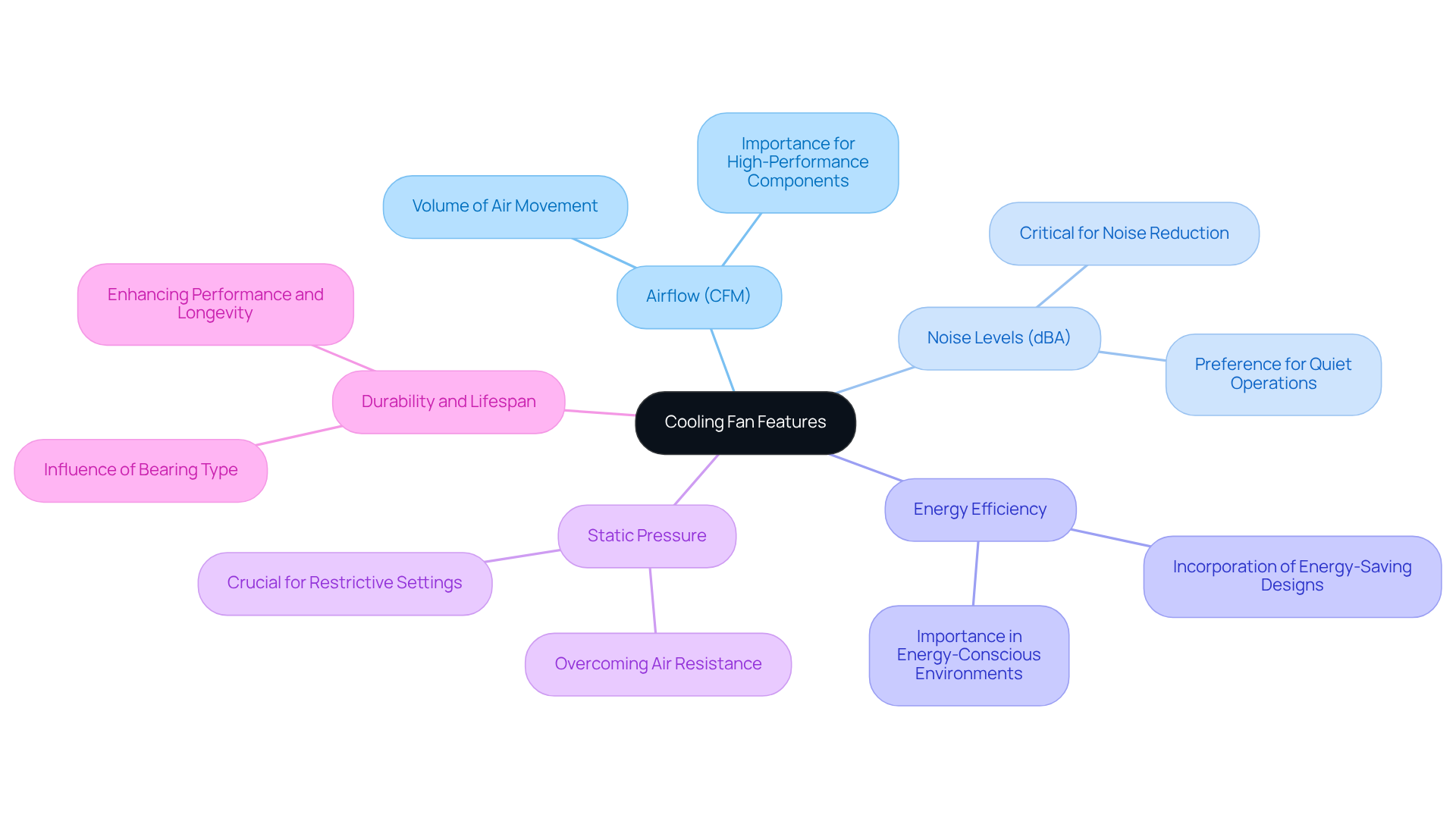
Comparative Analysis of Leading Cooling Fan Brands and Models
In the competitive landscape of cooling fans for electronics, several brands distinguish themselves through innovation and reliability, capturing the attention of discerning users.
- Noctua: Renowned for its ultra-quiet operation and high airflow efficiency, Noctua fans are often favored in high-performance PC builds. Their NF-A series is particularly noted for its durability and low noise levels, appealing to those who prioritize a silent computing environment.
- Corsair: Known for its RGB illumination and visual attractiveness, Corsair products also deliver robust performance. The LL series effectively merges visual appeal with efficient temperature management, making them a preferred choice among gamers seeking both aesthetics and functionality.
- Delta Electronics: A leader in industrial applications, Delta units are recognized for their high static pressure capabilities, making them ideal for server cooling and other demanding environments. Their reliability is essential for critical applications where performance cannot be compromised.
- Sunon: Offering a variety of compact and effective ventilation devices, Sunon is frequently selected for applications that require space-saving options without sacrificing air movement. Their designs cater to environments where efficiency is paramount.
- Thermalright: This brand is acknowledged for its high-performance CPU coolers and supplementary components, excelling in thermal management for overclocked systems. Their products are engineered to meet the needs of enthusiasts who demand peak performance.
Understanding these brands and their unique offerings allows users to make informed decisions tailored to their specific needs for a cooling fan for electronics.
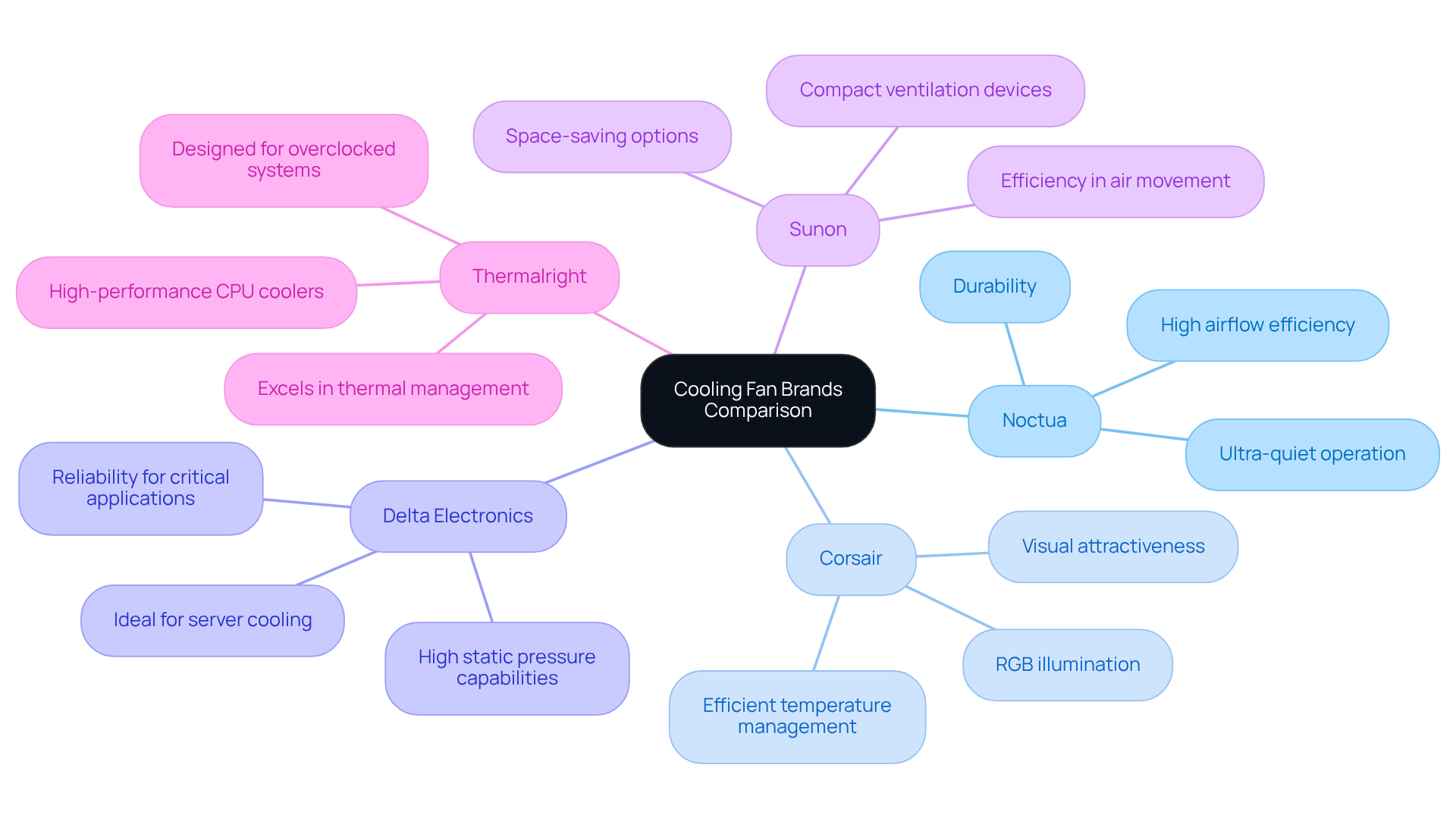
Selecting the Right Cooling Fan: Applications and Suitability
Choosing the right cooling fan is crucial and requires careful consideration of specific applications and environmental factors.
PC Cooling: For gaming PCs, high airflow fans that minimize noise levels are essential for optimal performance. The Noctua NF-A12x25 stands out as an exemplary choice in this category, providing both efficiency and tranquility.
Industrial Applications: In industrial environments, fans must deliver high static pressure to effectively move air through dense components. Delta’s high-performance models excel in this regard, ensuring reliable operation in demanding settings.
Home Appliances: Within home settings, the preference leans towards quieter fans. Brands such as Honeywell offer models that successfully balance performance with noise reduction, catering to the comfort of users.
Server Cooling: For servers, prioritizing reliability and efficiency is paramount. Fans that boast long lifespans and high airflow, particularly those from Sunon, are highly recommended to maintain optimal server conditions.
Compact Electronics: In compact devices where space is limited, micro blowers from brands like Pelonis Technologies provide effective temperature regulation without occupying excessive area, ensuring performance is not compromised.
In conclusion, selecting the appropriate cooling fan involves understanding the specific requirements of each application, thereby ensuring optimal performance and efficiency.
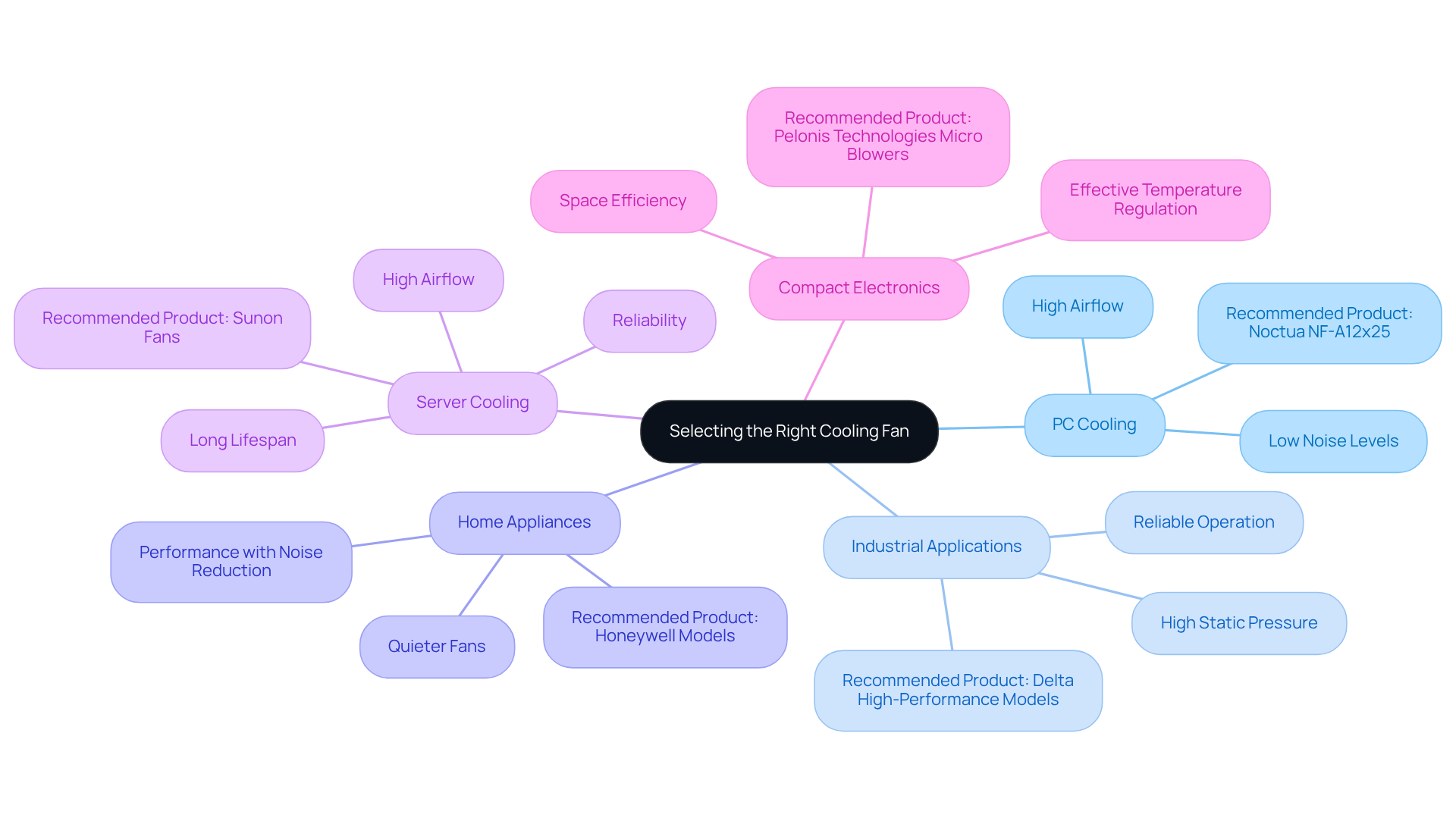
Innovative Technologies in Cooling Fans
Recent innovations in cooling fan for electronics technology present significant advancements that address both efficiency and performance challenges in various applications.
-
Brushless DC Motors exemplify this progress. Offering higher efficiency and longer lifespans compared to traditional brushed motors, these motors are particularly suited for continuous operation in critical environments. Their reliability ensures that systems remain operational without frequent maintenance.
-
PWM Control introduces another layer of sophistication. Pulse Width Modulation (PWM) technology enables precise control of motor speed, allowing devices to adapt their performance according to thermal demands. This adaptability not only enhances energy efficiency but also contributes to the longevity of the equipment.
-
Furthermore, the emergence of Intelligent Circulators marks a notable trend. These contemporary devices are equipped with sensors that monitor temperature fluctuations and adjust speed accordingly. This capability ensures optimal air circulation while minimizing excessive energy consumption, aligning with modern sustainability goals.
-
In addition, Noise Reduction Technologies have transformed the operational landscape. Advances in blade design and motor technology have resulted in quieter fan operation, which is especially advantageous in settings where noise reduction is critical, such as in offices or residential areas.
-
Lastly, the push for Compact Designs has led to the development of micro fans. These innovations in miniaturization enable effective cooling solutions in tight spaces, demonstrating that size does not compromise performance.
Collectively, these advancements illustrate a commitment to enhancing the cooling fan for electronics technologies, ensuring they meet the evolving demands of various sectors.
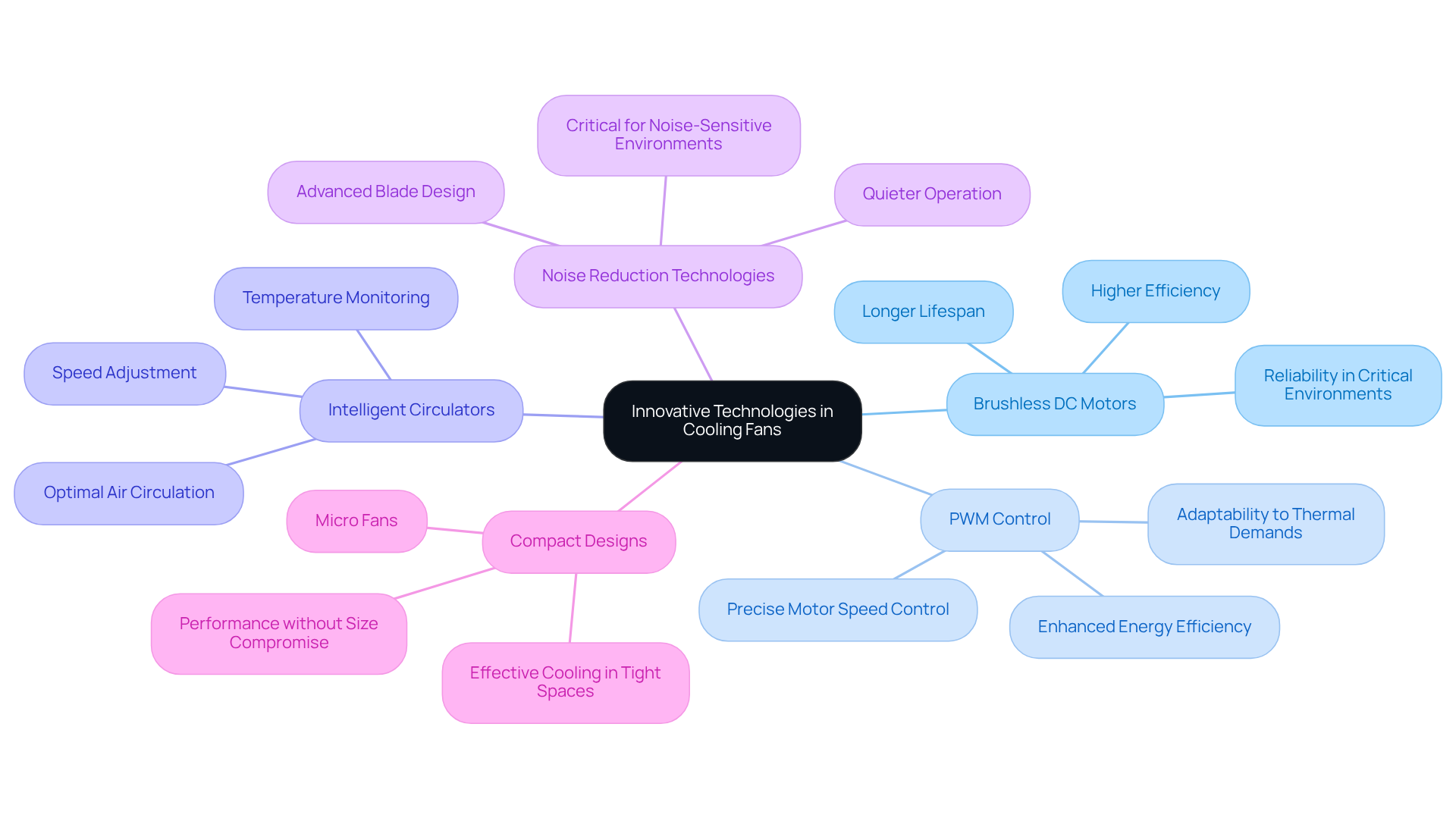
Conclusion
Selecting the right cooling fan is paramount for ensuring the longevity and performance of electronic devices. Understanding essential features such as airflow, noise levels, energy efficiency, static pressure, and durability empowers users to make informed decisions tailored to their specific needs. A comparative analysis of leading brands like Noctua, Corsair, Delta Electronics, Sunon, and Thermalright illustrates how different models cater to various applications, from gaming PCs to industrial environments.
The insights provided throughout this discussion emphasize the importance of matching the cooling fan’s specifications with the intended use. High-performance environments demand fans that excel in airflow and static pressure, while quieter models are preferable for home use. Furthermore, innovations such as brushless motors, PWM control, and intelligent circulators demonstrate the technological advancements enhancing efficiency and performance in cooling solutions.
Ultimately, the choice of a cooling fan should not be taken lightly, as it directly impacts the operational efficiency of electronic systems. By considering the discussed features and applications, users can ensure optimal performance while contributing to energy conservation and sustainability. Staying informed about the latest advancements in cooling fan technology is crucial for making the best selections for current and future needs.
Frequently Asked Questions
What is the primary function of a cooling fan in electronics?
A cooling fan serves as an integral component within electronic systems, essential for dissipating heat and maintaining optimal operating temperatures.
What does CFM stand for, and why is it important?
CFM stands for cubic feet per minute, which measures the volume of air a fan can move. Higher CFM ratings are vital for cooling high-performance components, ensuring efficient thermal management.
How do noise levels affect the choice of a cooling fan?
Noise levels, measured in decibels (dBA), are a critical consideration, especially in environments where noise reduction is prioritized. Fans with lower dBA ratings are preferable for quiet operations, contributing to a more pleasant user experience.
Why is energy efficiency important in cooling fans?
Energy efficiency is increasingly important in today’s energy-conscious environment. Modern devices often incorporate energy-saving designs, such as brushless motors, which reduce power consumption while maintaining performance.
What is static pressure, and when is it particularly crucial?
Static pressure is a factor that is especially crucial for blowers used in restrictive settings, such as those with heatsinks or radiators, where the movement of air must overcome resistance to ensure effective cooling.
How do durability and lifespan affect the performance of cooling fans?
Durability and lifespan are influenced by elements such as bearing type—whether ball or sleeve. Choosing the right bearing type can enhance performance and extend the operational life of a fan in demanding applications.
What should be considered when selecting a cooling fan for electronics?
When selecting a cooling fan, it is important to understand key features such as airflow (CFM), noise levels (dBA), energy efficiency, static pressure, and durability to ensure optimal performance and reliability in electronic systems.

